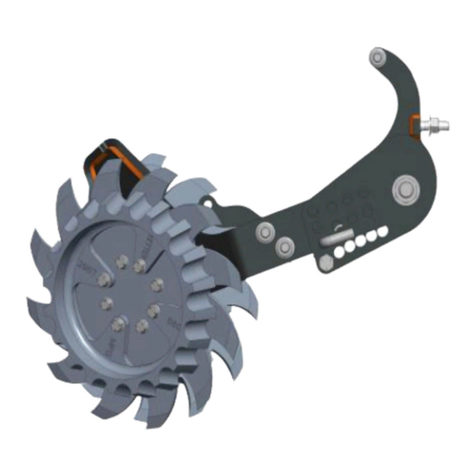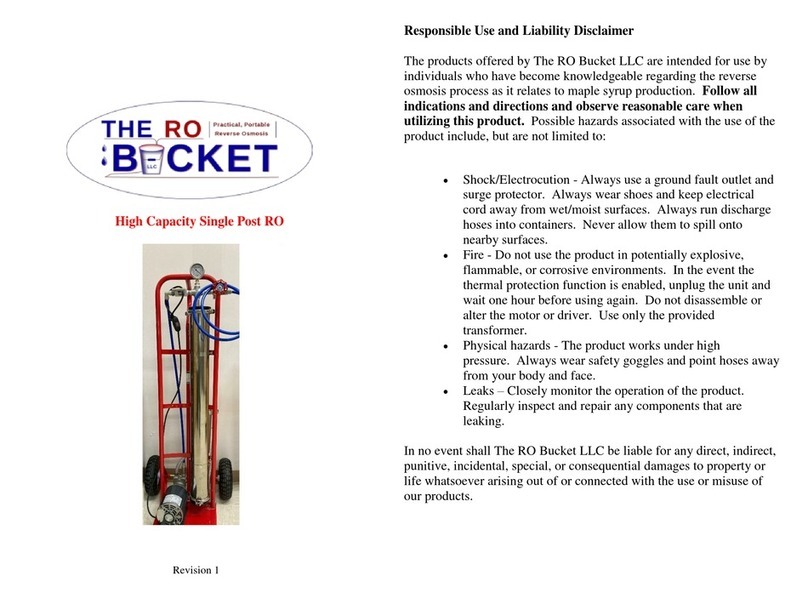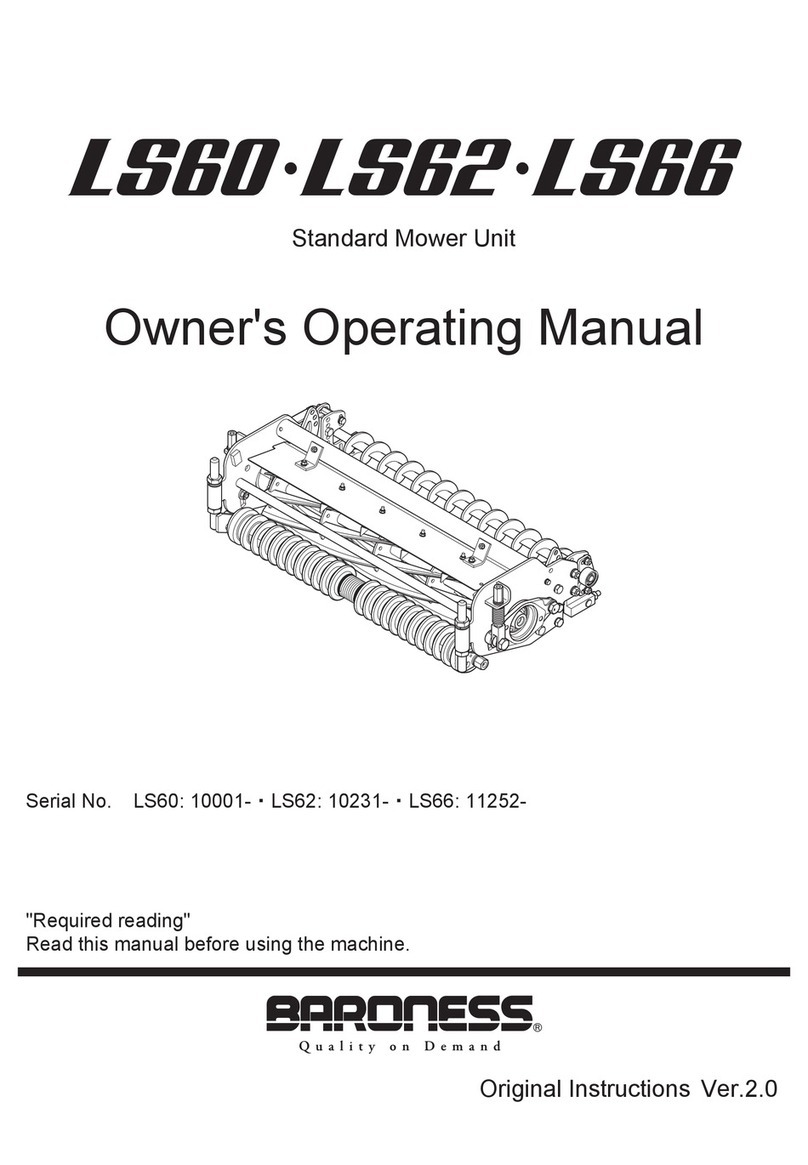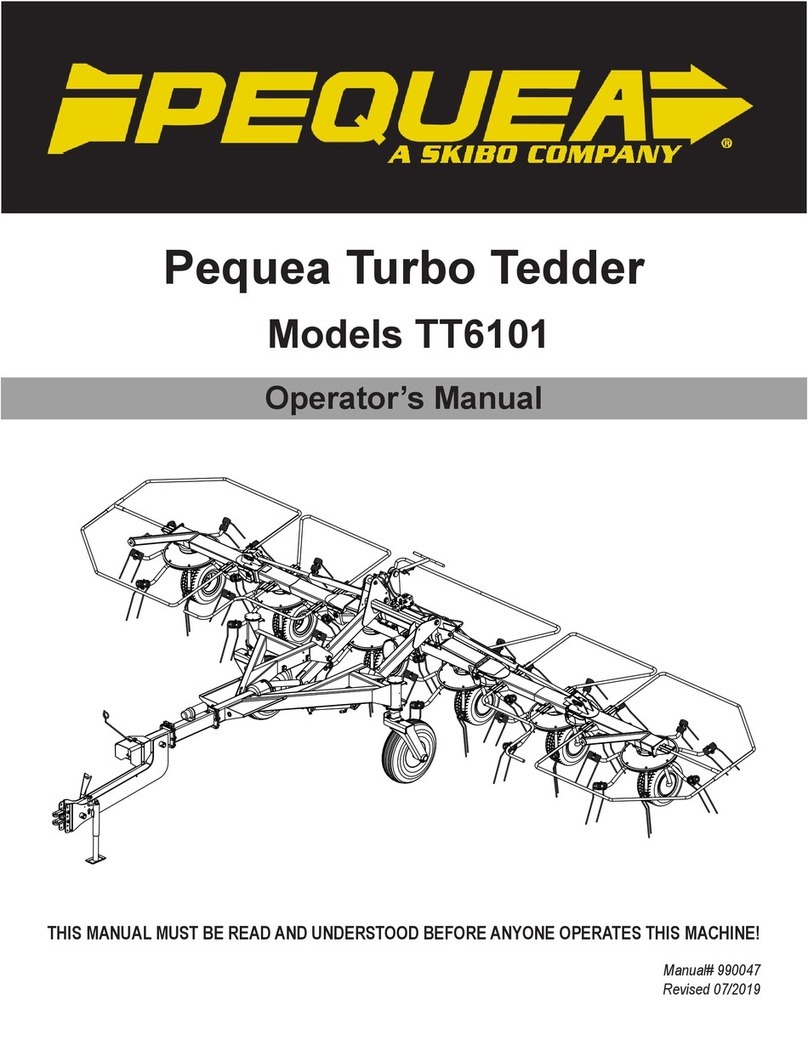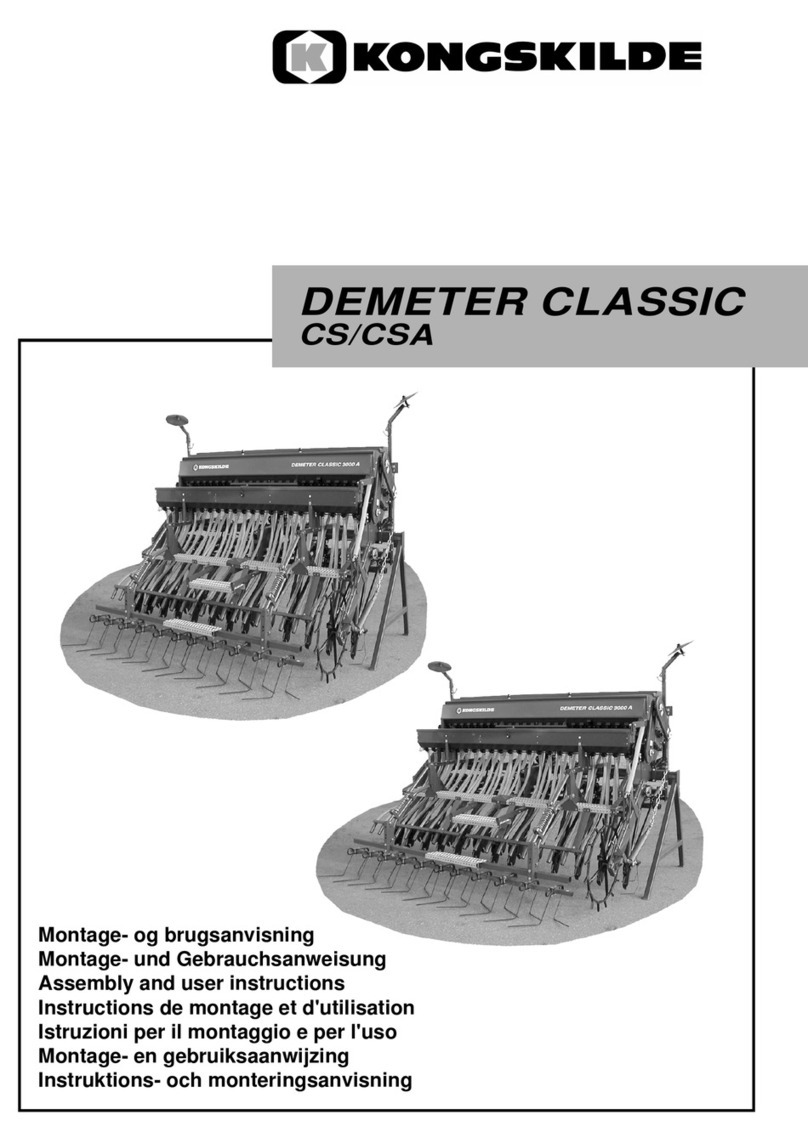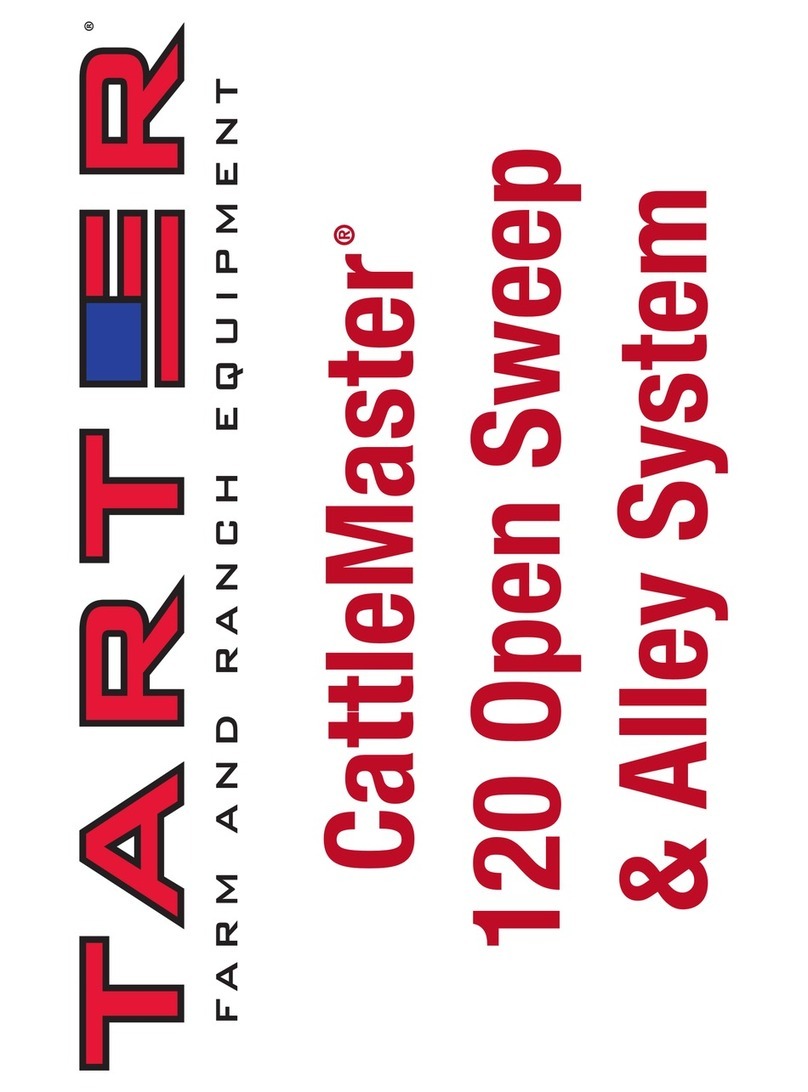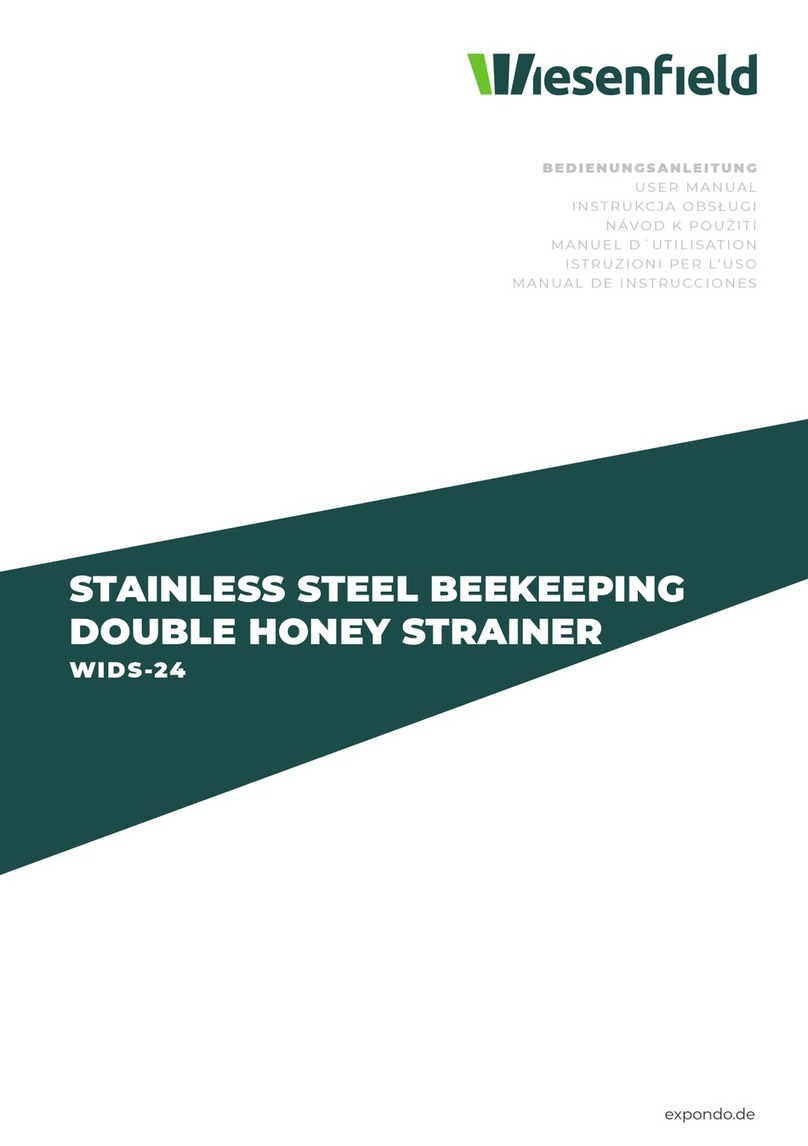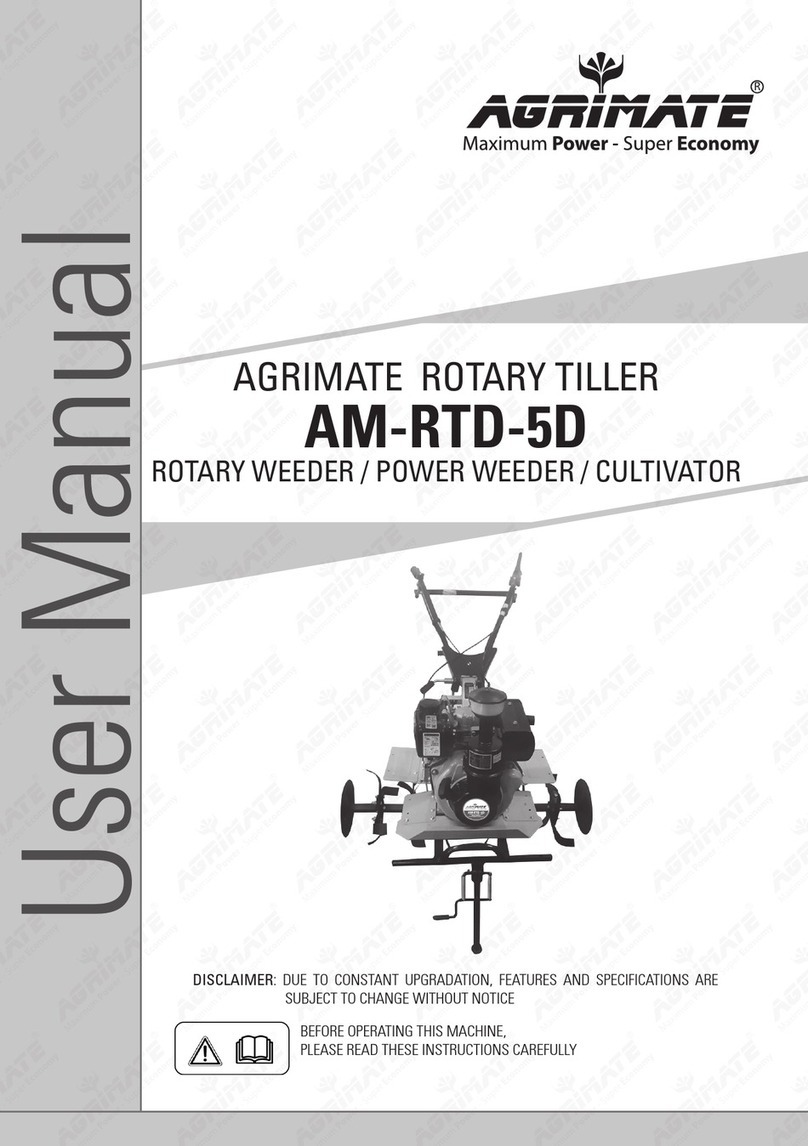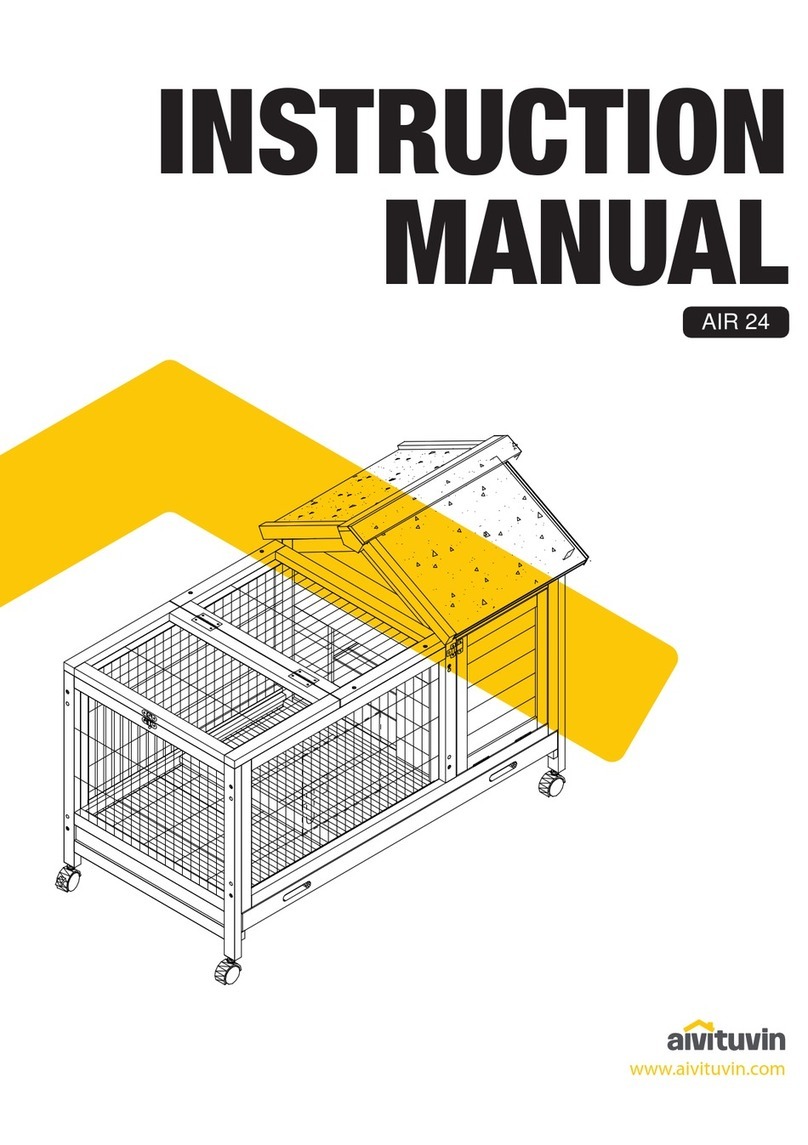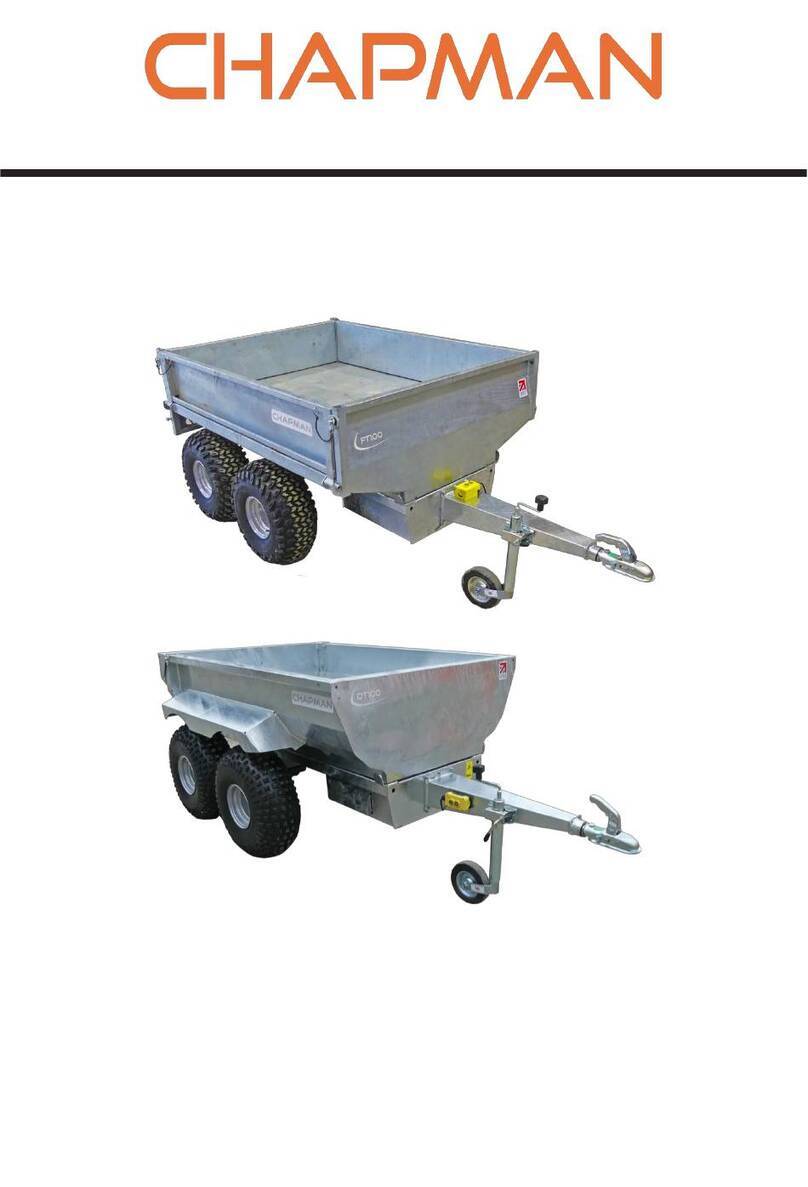Trusti Tuber Instruction Manual

Efficient
colostrum
management

3
Welcome to your Trusti Pasteur
The Trusti Pasteur heats water to a precise
and controlled temperature, enabling
effective and safe pasteurisation and
thawing of high-quality colostrum within
Trusti Colostrum bags.
Pasteurisation
How to Pasteurise:
Steps:
3.
2.
4.
5.
6.
7.
8.
1.
Attach the circulator to a short end of the Trusti
Tub
Fill the tub so water reaches the minimum level
on the circulator for two bags, or halfway
between MIN and MAX lines for one bag.
Turn on the circulator by pressing and holding
the On/Off button for 2 seconds. The
appliance display will illuminate, meaning the
circulator is ready for use. If the circulator has
not been used before, and the appliance is
started at this point, then the default
temperature of 60°C will be displayed, and the
default time of 2 hours will be set. If the
appliance has been used before it will display
the last used settings.
Set the temperature by pressing the TEMP
button. Pressing and holding for 2 seconds will
switch the temperature between Celsius and
Fahrenheit. Pressing and holding the + or –
button will increase or decrease the temperature
by 1.0°C. Pressing and releasing the + or –
buttons will increase or decrease the
temperature by 0.1°C.
Set the time by pressing the TIME button. Set
the desired length of time you wish the
circulator to operate for. Pressing the time
button will flip between hours and minutes.
Start/stop the circulator by pressing the
Start/Stop button. The circulator will begin
circulating and heating the water. The time will
count down from when it reaches the desired
temperature.
Place one or two Trusti bags into the rack. The
bag should float so the colostrum level is the
same as the water level.
Place the lid to enable the most consistent
water temperature.
9. When pasteurisation is complete, quickly cool
the colostrum by either refrigerating or running
cold water through the Trusti Pasteur. If to be
used within four days the colostrum can be
stored in the refrigerator, otherwise store in the
freezer for up to one year. If feeding
immediately, cool to maximum 42 degrees
prior to feeding.
Thawing
The sooner the calf is fed after birth, the more
antibodies it will absorb into the bloodstream. By
using the Trusti Pasteur to quickly thaw and warm
the colostrum you can ensure your calf receives
maximum benefit from your carefully handled
colostrum.
The optimum feeding temperature of colostrum
is body temperature (39°C ), so the calf does not
expend energy to warm the colostrum.
The maximum feeding temperature is 42°C as to
avoid damaging the calf’s oesophagus and
stomachs.
How to Thaw:
• Option One – Easy:
Set the temperature to 42°C and place the
bag(s) into the Trusti Pasteur racks. The thaw
time is 35 minutes for bags containing 4 litres or
20 minutes for bags containing 2 litres of
colostrum.
• Option Two - Fastest:
Set the temperature to 60°C. Thaw time will be
only 20 minutes for bags containing 4 litres or 15
minutes for 2 litres. The bags MUST be removed
at this point of time before the colostrum is too
hot to be fed. If
not removed at this point you
must check the feeding temperature is less than
42°C prior to feeding.
Why Pasteurise Colostrum?
Two reasons:
1.
2.
To improve the absorption of crucial antibodies
in the colostrum.
To minimise disease transfer.
Bacterial contamination of colostrum negatively
affects the ability for the calf to absorb antibodies
into the blood stream. Due to the calf’s immature
immune system it is also more susceptible to
disease when exposed to pathogens.
It is well proven that maximising the absorption of
antibodies in the first few hours of a calf’s life will
result in a healthier and more productive animal
for life.
Some herds engage in eradication or control
programmes for diseases such as Johnes
(Mycobacterium avium subspecies paratuberculo-
sis) and Mycoplasma, in which case heat treatment
of both colostrum and milk or the use of powdered
milk plays an important role in minimising spread
of disease.
Studies have shown that 60°C is a recommended
temperature to pasteurise colostrum. Over 61°C
there is significant damage to antibodies as well as
increased viscosity of the colostrum, whereas at
60°C or below there is marginal reduction in
antibody level.
The time of pasteurisation should be a minimum of
30 minutes. 30 minutes at 60°C achieves the vast
amount of bacterial kill and for many bacterial
subgroups e.g. E.coli, there is no significant
difference achieved by extending from 30 minutes
to 60 minutes. However, for eradication
programmes it is recommended to treat for the full
60 minutes. While research has shown 60 minutes
to kill all Mycoplasma and Johnes (MAP) there is
no guarantee of 100% elimination in the field.
Cleaning and Maintenance
Over time small particles may collect in the
appliance. General cleaning and maintenance
from time to time will keep your appliance in
perfect working order. Keep the machine dry if not
in use.
General Cleaning
For general cleaning to remove any dirt from the
impeller and heating coil, simply fill your chosen
container with warm water and a weak mixture of
dishwashing detergent. Set your appliance at 70°C
and run the appliance for around 60 minutes.
Remember to rinse the circulator afterwards to
remove any remaining detergent prior to use.
Always use clean water and do not use any acid or
alkali products to wash it.
In the unfortunate event that a lot of debris
becomes trapped or sucked into the rear of the
appliance, then you may need to remove the rear
cover of the appliance and rinse the heating coil
and impeller. The circulator has a back cover that
detaches for cleaning. It should only be detached
when the circulator is off and unplugged; it should
never be detached during use. The removal of the
rear plate for cleaning of the coil and impeller
should not be necessary for general day use.
To open the rear plate for cleaning:
•
•
•
•
After some time, the water you use will deposit
calcium onto the coils, much in the same way as
the element in your kettle. When the coils become
covered by calcium deposits, they need to be
cleaned to keep them efficient. To do this, you
can either use 25% vinegar solution in water, or
add a dedicated decalcifying agent, such as CLR
(Calcium, Lime, Rust remover) to your water bath,
following the dilution instructions provided by the
manufacturer.
Set the temperature of your Trusti Pasteur to 25°C
/ 77°F and allow the appliance to run for around
30 minutes.
Decalcification
The principle of pasteurising first colostrum is to
minimise the bacteria load while maintaining a
high antibody level.
Bacterial kill is achieved by heating the colostrum
above where the bacteria will survive, however if
the colostrum is heated too high or for too long
this will result in antibody damage.
Hence the requirement for a lower temperature
and longer time pasteurisation method relative to
pasteurising other liquids.
The recommended temperature is 60°C for 60
minutes.
If the temperature is below 59°C, there is less
effective bacterial kill.
At temperature over 61°C, there is significant
antibody damage.
Simply place the colostrum filled bags (up to 2 x 4
litre capacity) into the water within the Trusti
Pasteur, set the temperature to 60°C and set the
time for 60 minutes. When the water reaches
60°C, the timer will count down.
Colostrum must be pasteurised within the Trusti
Colostrum bags, never place colostrum directly
into the Trusti Pasteur. Use the separator rack to
ensure there is even flow of water all around the
bags.
When pasteurisation is complete, chill the
colostrum
quickly to prevent replication of any
remaining bacteria.
The sooner the cow is milked after calving the
greater the antibody level. After calving the
antibodies are resorbed from the colostrum
resulting in 35% less antibodies after 12 hours.
Harvest cleanly, while pasteurisation achieves
approximately 98% reduction in bacterial count it
is always better to begin with cleaner product and
create good harvesting habits.
Allocate colostrum to the Trusti Colostrum bags,
record the cow, volume, and date with a
permanent marker and pasteurise within a couple
of hours of harvesting. If unable to pasteurise this
soon then refrigerate the colostrum and
pasteurise within a few days. Be sure to record on
the bag that pasteurisation is complete.
It is important to cool the pasteurised colostrum
quickly. Colostrum can be stored in the
refrigerator for up to four days. If not going to be
used within four days then store in a deep freeze
with reliable temperature for up to one year.
The sooner the calf is fed after birth the better the
absorption of antibodies (within the first hour is
best),
after 12 hours the absorption rate has fallen
by two thirds.
Equipment used to feed the calf should be
thoroughly cleaned. After making the effort to
optimise the colostrum you do not want to then
introduce contamination with unhygienic
equipment.
Keys to Success with Pasteurisation
Test colostrum with a brix refractometer so you
know you are using high quality colostrum. > 22
indicates high quality and equivalent to 50g/l
immunoglobulins/antibodies.
Using a screwdriver, carefully remove the four
screws and washers from the rear of the
appliance.
Remove the two screws holding the plastic
housing that protects the impeller.
Rinse the appliance under a running tap to clean
any debris from the heating coil and impeller.
Re-install the impeller housing and back plate.

3
Important Safeguards
Functions at ambient temperature between 5°C and 40°C
It is recommended to have your Trusti Pasteur temperature calibrated annually.
To protect against electrical shock, do not immerse power cord or plug in liquid.
Unplug the appliance from any electrical outlet when not in use and before cleaning.
Allow the appliance to cool before putting in or taking out any cleanable parts.
Do not use any attachment or accessories not recommended by the supplier.
Do not use this appliance for any purpose other than its intended use.
Do not use this appliance if it has been dropped or appears to be damaged or has a damaged cord or plug.
Do not attempt to operate the appliance with a water level below the MIN (minimum) line.
Take care not to overfill the water bath above the MAX (maximum) water line; allow sufficient room to accommodate the volume of Trusti Bags when added to
water bath. If water level rises above the MAX water line the PCB may be damaged.
Take care when removing the appliance when it is hot, as hot water will collect on the inside of the appliance while working.
To disconnect, touch the Start/Stop button to turn off the appliance, then remove the plug from the wall outlet.
Ensure the water in the Trusti Tub is at a suitable temperature before emptying. Temperatures above 50°C can scald. To empty simply unscrew the plug on one
end of the tub.
Please be careful when removing Trusti Colostrum bags from the water as they can be hot to the touch.
Connect to properly ground (earthed) electrical outlets only and correct stable voltage.
Only use the heating unit in water, no other liquids. Always use clean water to operate with no particles or residues.
Choose a secure location to operate your Trusti Pasteur.
Do not use outdoors.
Do not use near a hot gas or electric burner.
Do not let cord touch hot surfaces.
When the Trusti Pasteur is not in use we recommend to remove the heating unit from the water and allow to dry for storing.
When in use around children and pets, close supervision by an adult is necessary and the appliance should be kept out of their reach.
A.
B.
C.
D.
E.
Display screen
MAX water level
MIN water level
Water outlet
Power connection
F.
G.
H.
I.
Fixing clip
Side water inlet vents
Removable cover
Bottom water inlet vents
f
g
h
i
j
Time setting button
In use symbol
Increase time or temperature button
Decrease time or temperature button
On/Off/Start/Stop button
Circulator Parts
Disclaimer: Antahi Innovations will not be liable for any loss or harm caused to any animal, any indirect, special or consequential loss or damage (whether for loss of profit or
otherwise), costs, expenses or other claims arising out of or in connection with the use of this product.
These are the possible error codes and their meaning.
EO4: Water in the tub/container below the minimum water level of machine, E04 will show on the displayer. top up water above minimum water level, E04 will
all-clear
E08: NTC (temperature sensor) loosening or damage will cause PCB short circuit, this can be caused by water level too high or excessively fluctuating voltage.
E09: Hardware failures, seldom occur. This can be caused by water level too high or excessively fluctuating voltage.
1)
2)
3)
Error Codes:
In the event that the guidelines are not followed the warranty will be void.
Warranty:
a
b
c
d
e
Temperature display
Time display
Symbol for centigrade (if selected)
Symbol for Fahrenheit (if selected)
Temperature setting button
This manual suits for next models
2
Popular Farm Equipment manuals by other brands
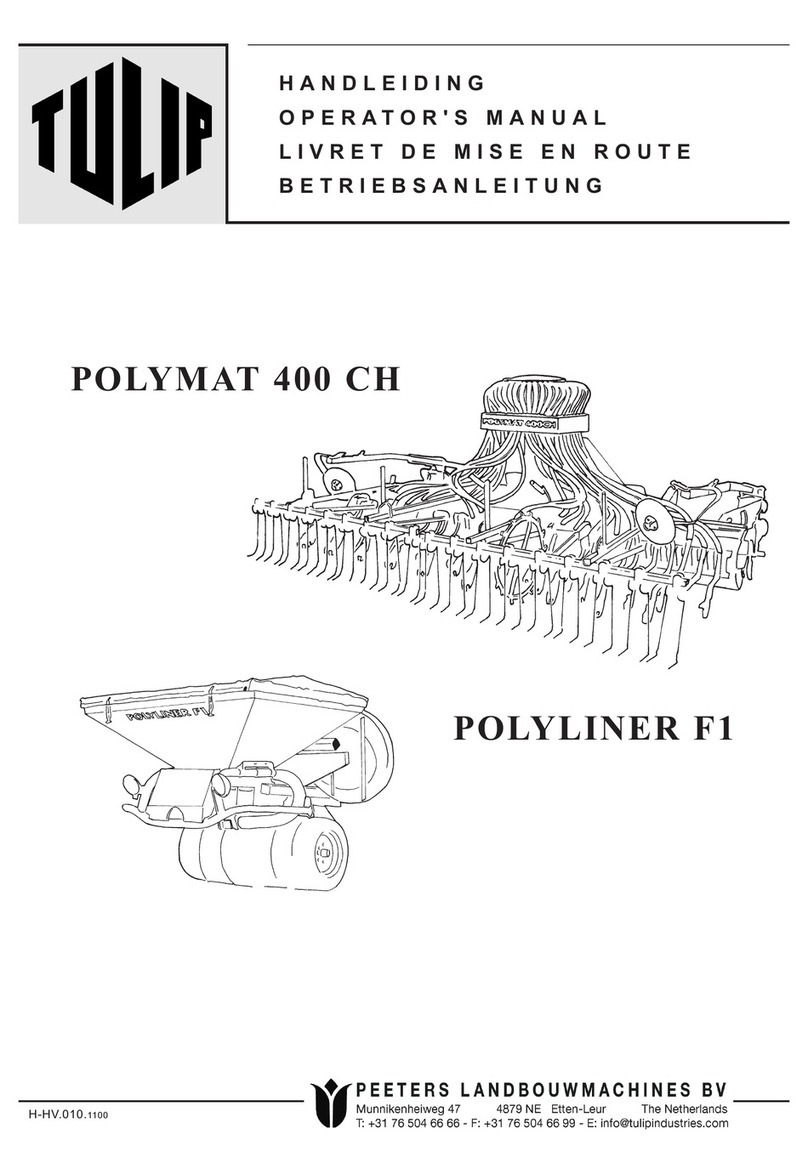
Tulip
Tulip POLYMAT 400 CH Operator's manual
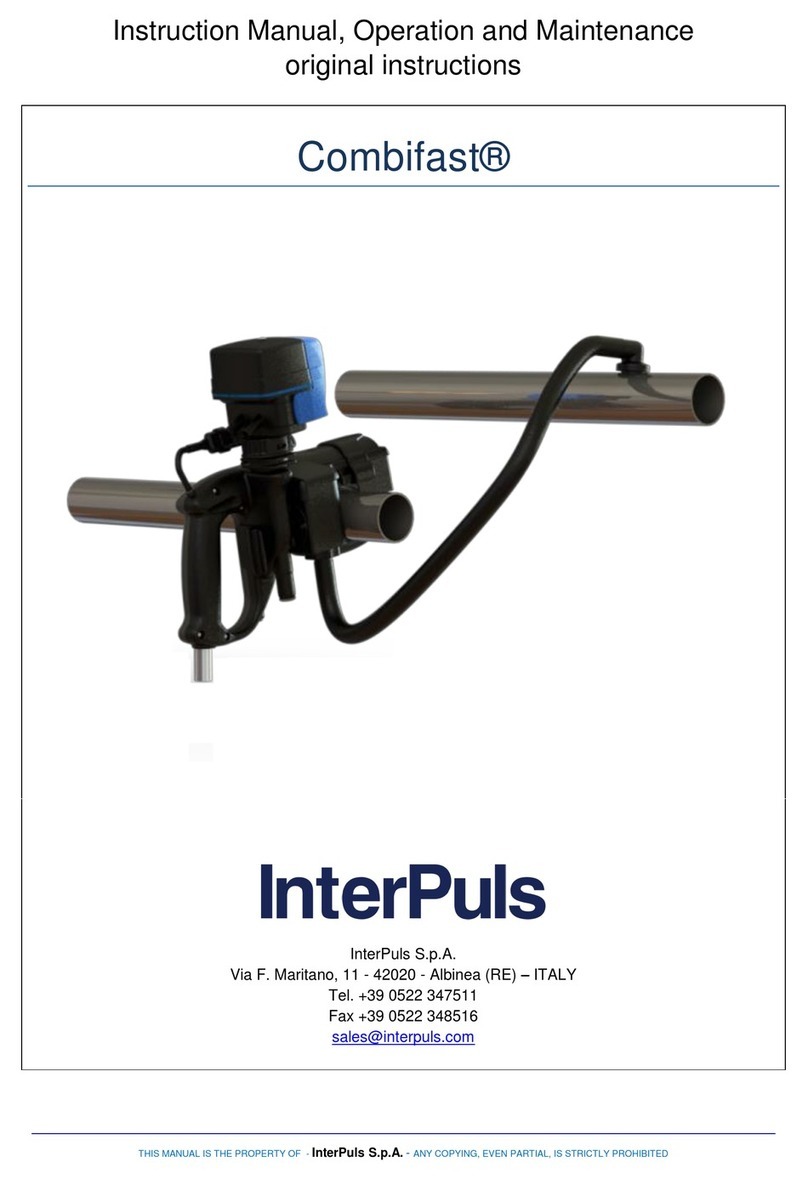
InterPuls
InterPuls Combifast Instruction Manual, Operation and Maintenance original instructions
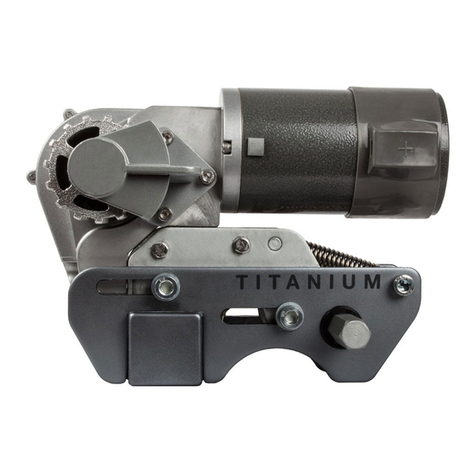
Quattro
Quattro Titanium EGO400 Installation guide and user information
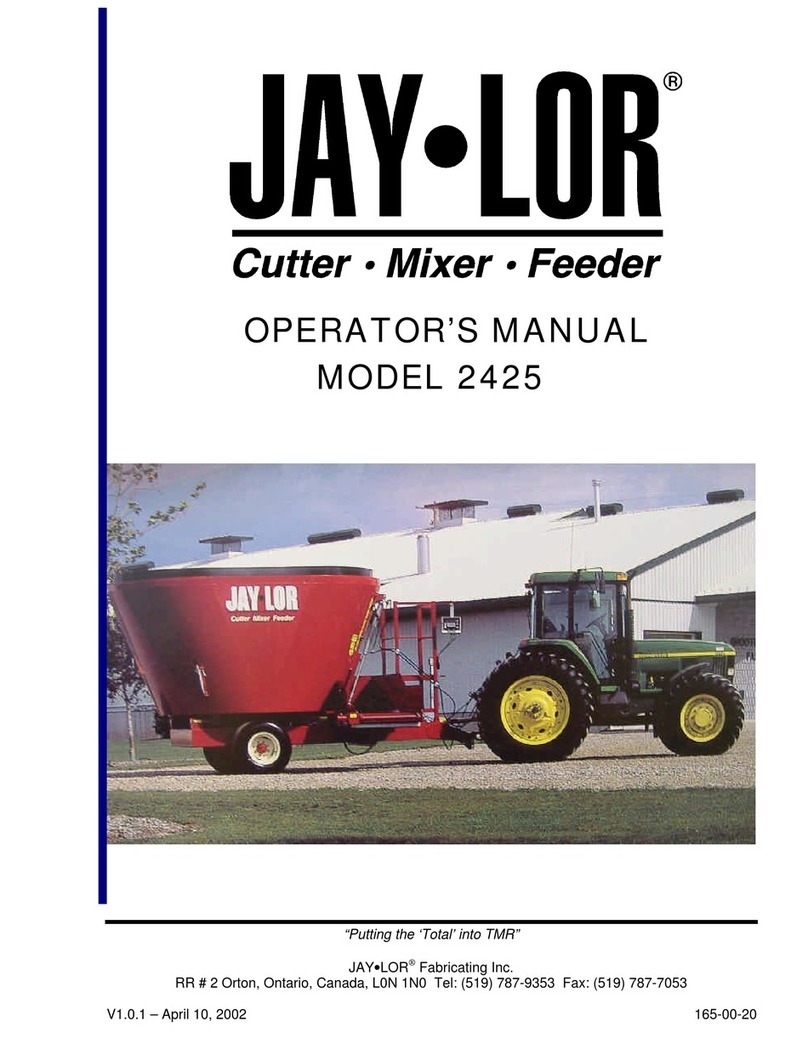
Jay-Lor
Jay-Lor 2425 Operator's manual
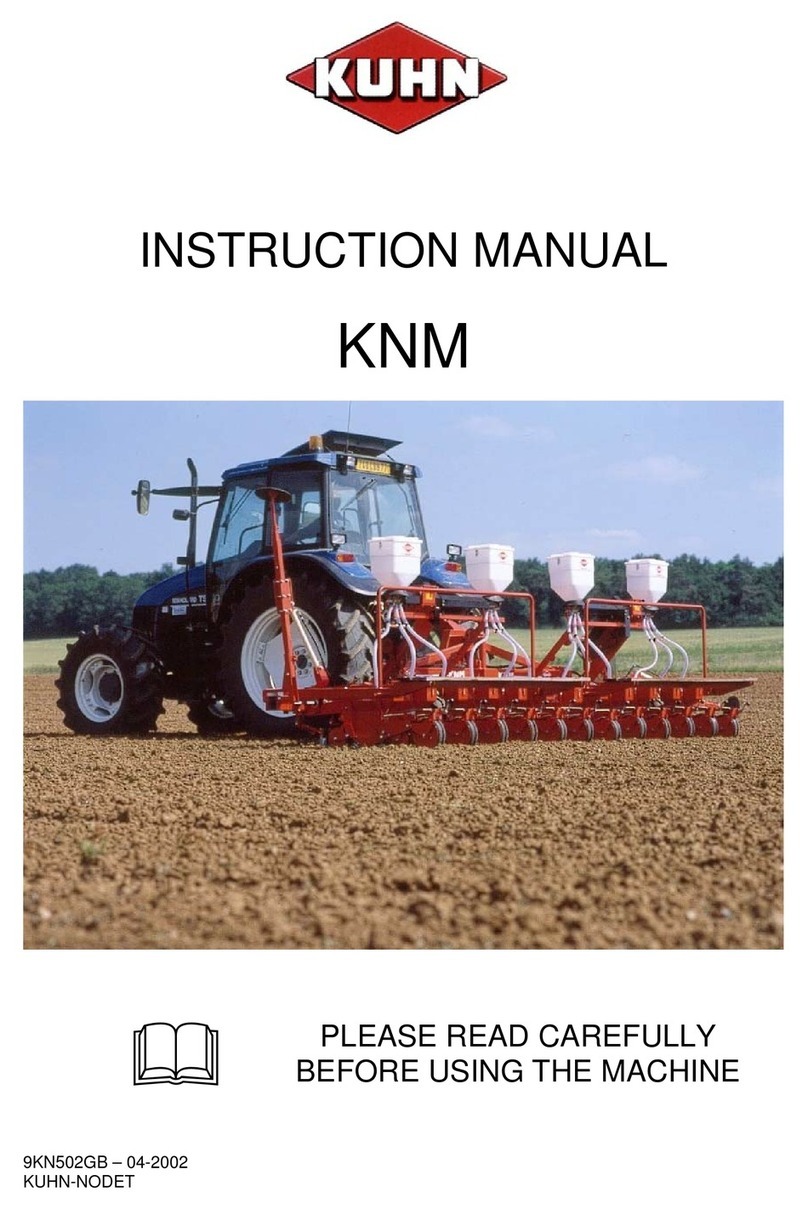
KUHN
KUHN KNM instruction manual

WAM
WAM WATERMIZER 3335 owner's manual
